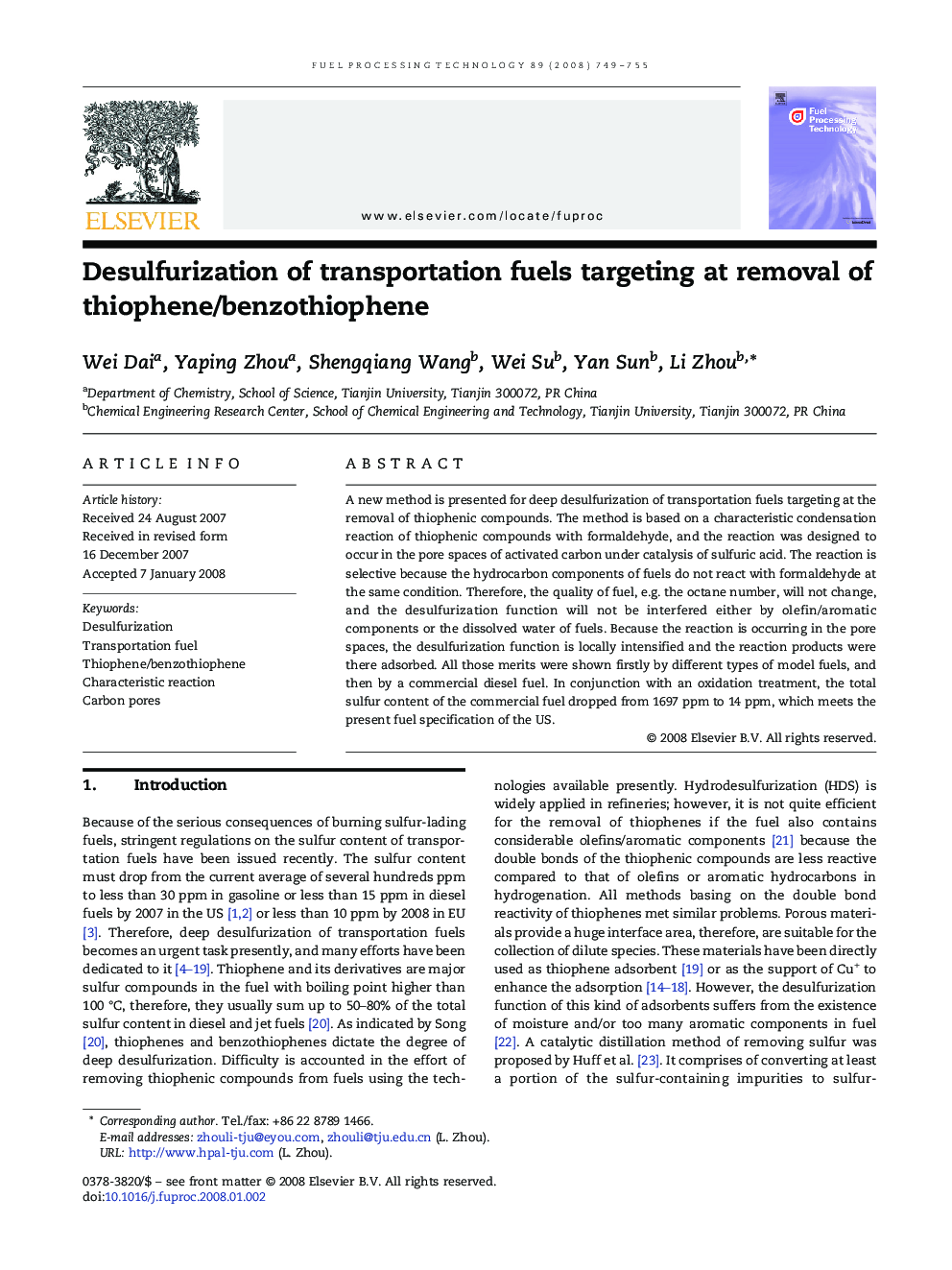| Article ID | Journal | Published Year | Pages | File Type |
|---|---|---|---|---|
| 211215 | Fuel Processing Technology | 2008 | 7 Pages |
A new method is presented for deep desulfurization of transportation fuels targeting at the removal of thiophenic compounds. The method is based on a characteristic condensation reaction of thiophenic compounds with formaldehyde, and the reaction was designed to occur in the pore spaces of activated carbon under catalysis of sulfuric acid. The reaction is selective because the hydrocarbon components of fuels do not react with formaldehyde at the same condition. Therefore, the quality of fuel, e.g. the octane number, will not change, and the desulfurization function will not be interfered either by olefin/aromatic components or the dissolved water of fuels. Because the reaction is occurring in the pore spaces, the desulfurization function is locally intensified and the reaction products were there adsorbed. All those merits were shown firstly by different types of model fuels, and then by a commercial diesel fuel. In conjunction with an oxidation treatment, the total sulfur content of the commercial fuel dropped from 1697 ppm to 14 ppm, which meets the present fuel specification of the US.
